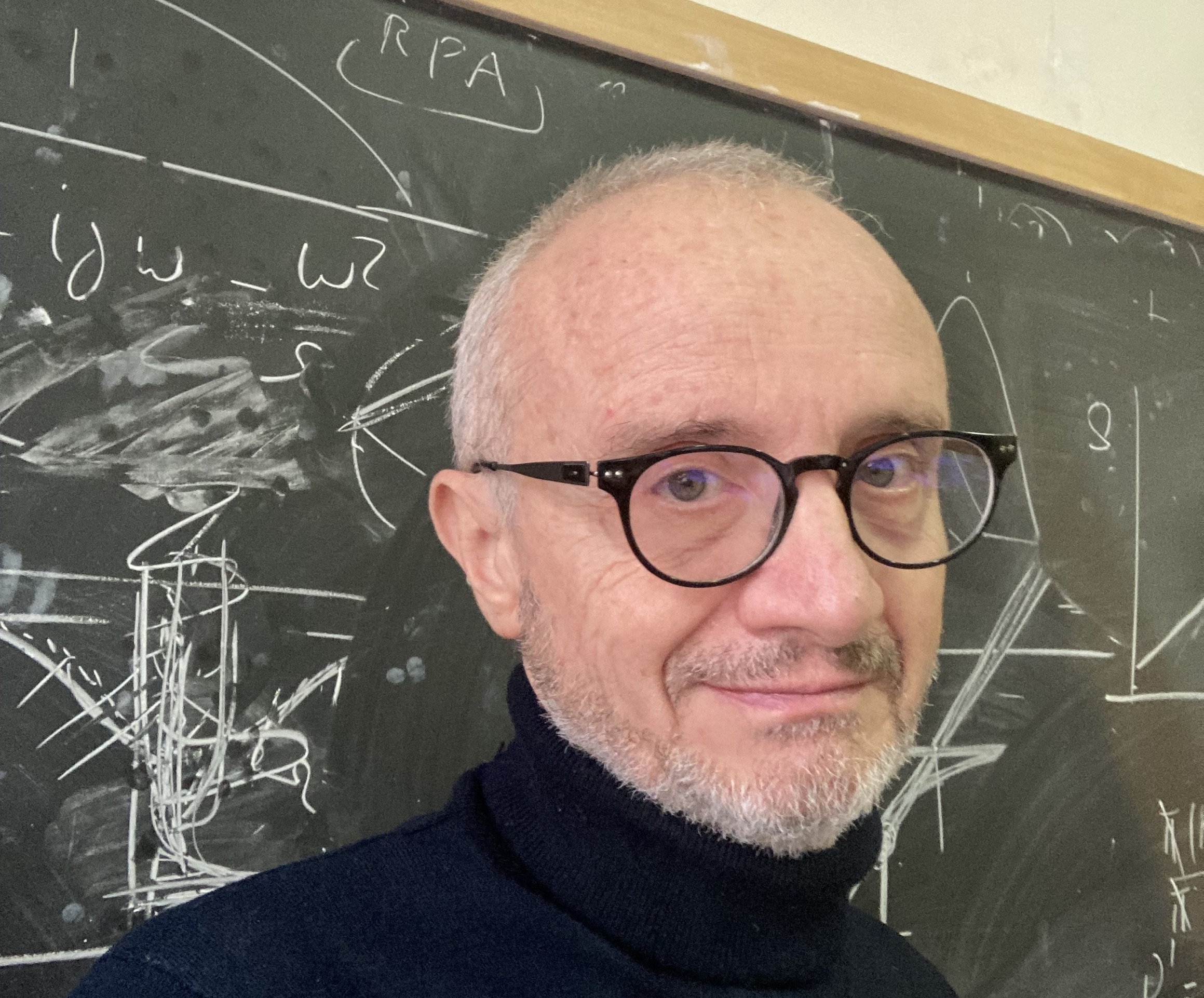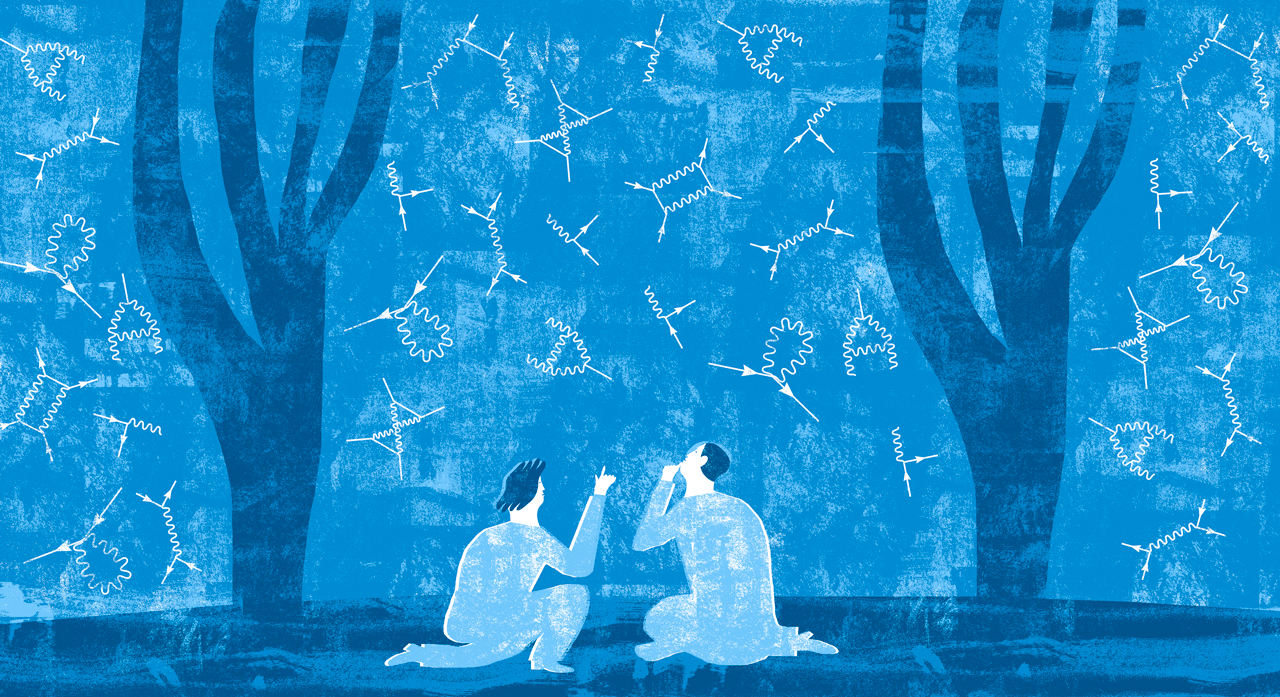
MANY-BODY PHYSICS
ORARIO DI RICEVIMENTO LUNEDI 15-16 UFFICIO 147 EDIFICIO MARCONI
il ricevimento puo' essere fatto anche online e va concordato prima via mail
Il Link su cui avviene il ricevimento e'
https://meet.google.com/nxv-bbza-vqf
Il corso inizia martedi 27/09/2022
in aula Majorana Edificio Marconi
Corso per il
biennio specialistico A.A: 2022/23. Docente Marco Grilli
Martedi 10-12 Aula Majorana EM
Mercoledi 8-9 Aula Majorana EM
Giovedi 8-10 Aula Majorana EM
ESAMI AA 2022/23
Data appello inizio prenotazione fine prenotazione
da concordare col docente
https://meet.google.com/nxv-bbza-vqf
Programma di Many-Body Physics
A.A. 2022/23
Second quantization
Fock space. Creation and annihilation operators and field operators. Operators in second quantization.
(Fetter e Walecka, Ch.1:1-2).
Landau theory of normal Fermi liquids. Introduction to the concepts of quasi-particle. Energy as a functional of the quasi-particle distribution function.
Equilibrium properties of quasi-particles: effective mass, specific heat, compressibility, spin suceptibility. Stability of the ground state. Currents associated to the quasi-particles.Kinetic equations: collective modes and zero-sound. (Nozieres,Ch.1; Baym e Pethick,Ch.1:1.1,1.2.1,1.2.2,1.2.3,1.3.1, (a) and (b))
Green function and perturbation techniques. Single-particle Green functions at T=0 Spectral representation and poles. Equation of motion.
Interaction representation. S matrix. Wick's theorem and Feynman diagrams. Diagrammatic rules for different interction types.
Self-energy and Dyson equation. Hartree-Fock approximation, RPA approximation.
Matsubarq Green function. Perturbation techniques and thermodynamic potential. Identification of the phenomenological parameters of Landau;s theory with microscopic quantities. Quasi-particle lifetime. (ADG,Ch.2,Ch.3,Ch.4:18 and 19, Fetter and Walecka,Ch.3:6,8)
Linear response theory; response function. Analytic properties. Reactive and absorptive part. Kramers-Kronig relations. Kubo formula
Fluctuation and dissipation theorem. Spectral representation and sum rules. Conductivity. Continuity equation and gauge invariance.
Esplicit calculation of response functions in perturbation theory (RPA) in simple cases of physical interest.
(Des Cloizeaux, Fetter e Walecka, Schrieffer, Mahan)
The Hubbard model: mean-field approach to the antiferromagnetic Néel state; magnetic instability and Stoner criterion
Electron-phonon interaction (Mahan)
Adopted texts
P. Nozieres: Theory of interacting Fermi systems (Benjamin 1964)
A.A. Abrikosov, L.P. Gorkov, and I.Y.Dzyaloshinskii: Quantum field theoretical methods in statistical physics (Pergamon 1965)
A.L. Fetter and J.D. Walecka: Quantum theory of many particle systems (Graw-Hill 1971) G.D. Mahan: Many particle physics (Plenum Press, 1990)
D.Des Cloizeaux in ``Theory of condensed matter'', Proceedings, Trieste IAEA 1968
J.R. Schrieffer: Theory of superconductivity (Benjamin 1964)
G.Baym and C.Pethick: “LANDAU FERMI-LIQUID THEORY: Concepts and Applications (Wiley 2004)
Bibliography
Prerequisites
Prerequisites of the course are: quantum mechanics and Condensed Matter (according to the programs of the corresponding undergraduate courses). Clearly the course will be more stimulating the higher are the student's competences. The course will deliver 60 hours of teaching and exercises that the students will solve during the class. A tutorial and supporting activity can also be organized at the beginning of the course for those students who have specific lacks of competences.
Study modes
The course will deliver 60 hours of teaching and exercises that the students will solve during the class. A tutorial and supporting activity can also be organized at the beginning of the course for those students who have specific lacks of competences.
Exam modes
Criteria for the exam evaluation
The examination consists of an interview on the most relevant topics
presented in the course. To pass the exam, the student must be able to
present arguments and repeat calculations discussed and explained
during the course. The student will be asked to apply the
methods learned during the course to exercises or to examples and
situations similar to those that were discussed in the course.
The evaluation takes into account:
- Correctness and completeness of the concepts discussed by the student;
- clarity and rigor of presentation;
- analytical development of the theory;
- problem-solving skills (method and results).
Last Update January 2017
